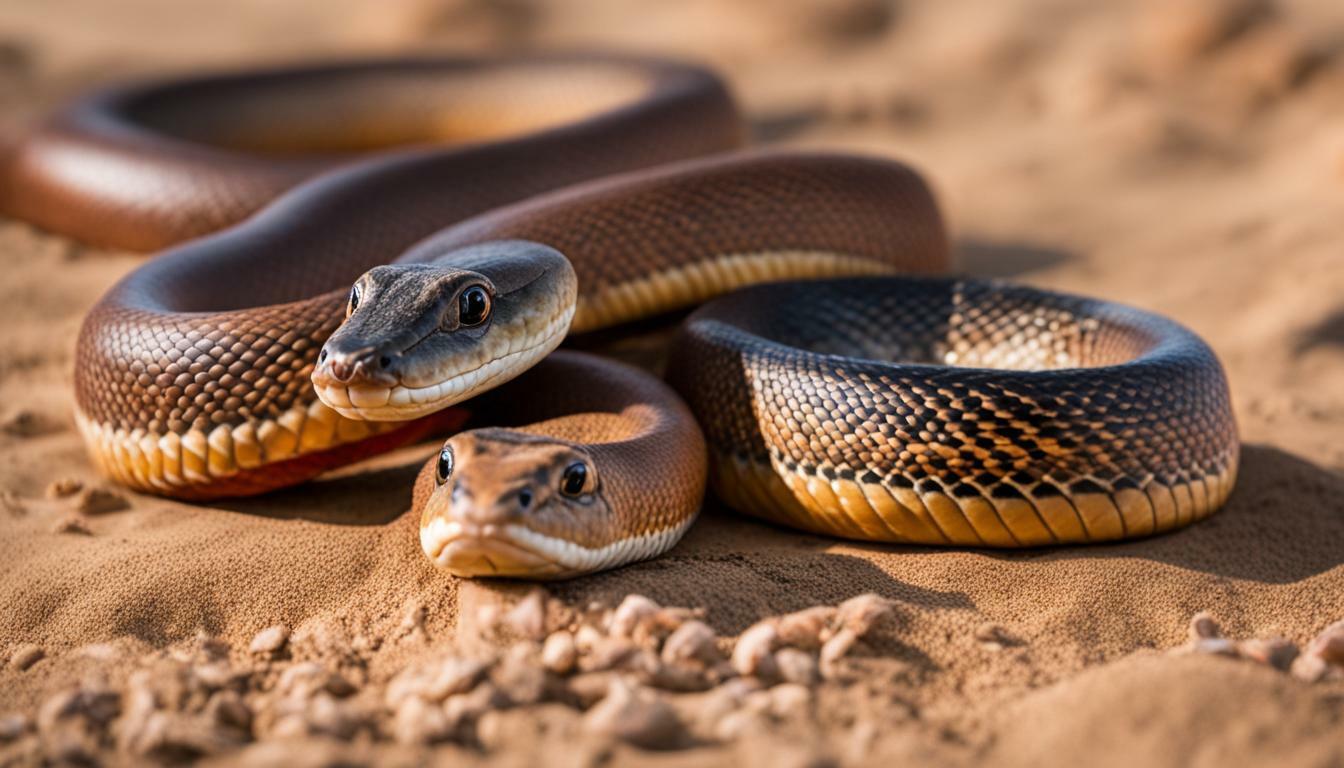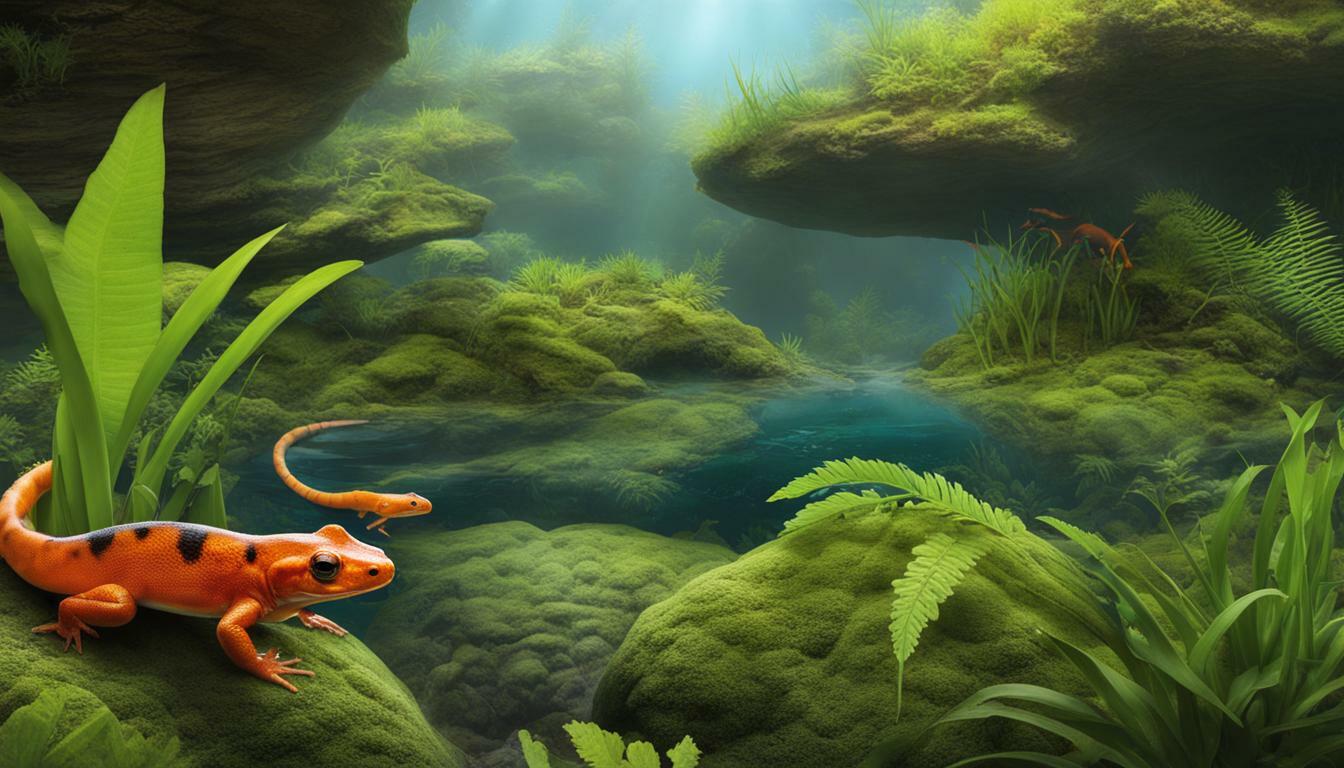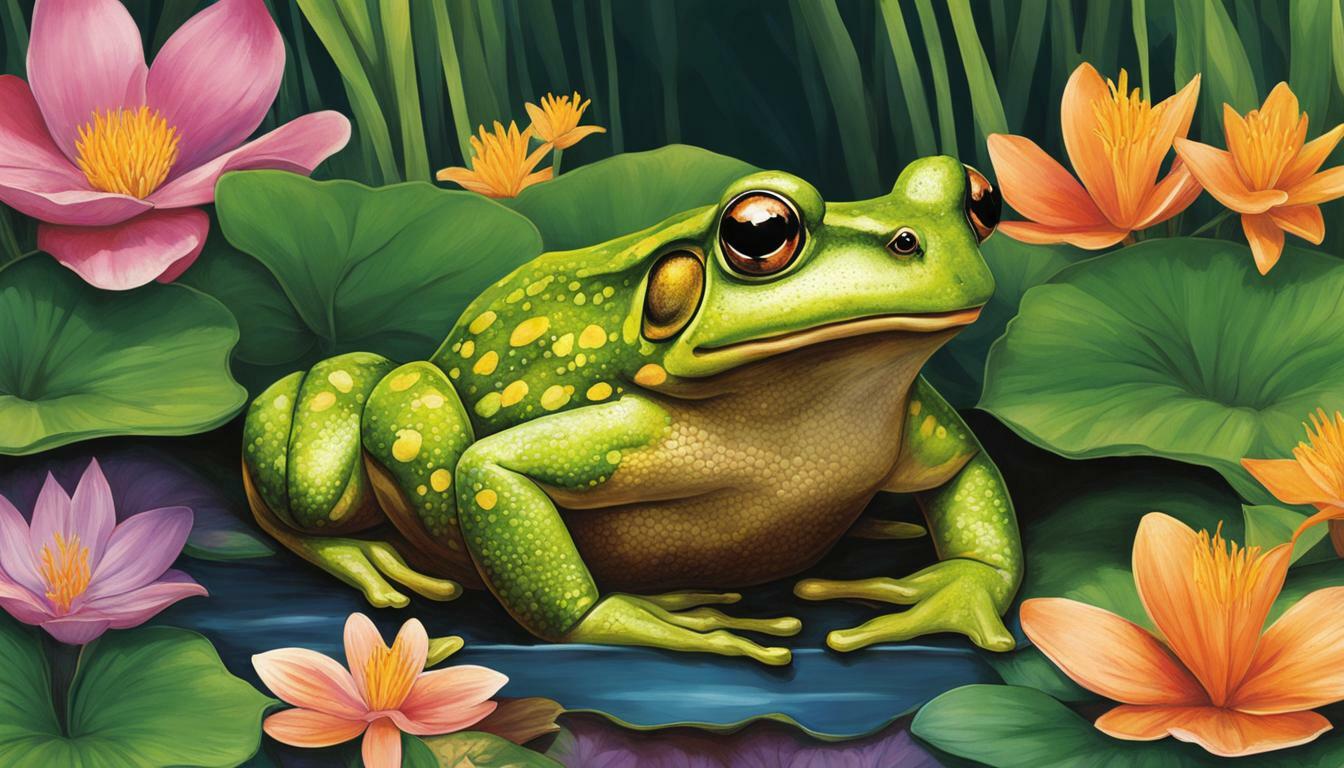African rock pythons and reticulated pythons are two captivating serpent species with distinct characteristics and habitats.
These snakes differ in size, as African rock pythons typically weigh between 71 and 121 pounds and grow to be about 9 to 12 feet long, while reticulated pythons are larger, weighing between 100 and 200 pounds and measuring between 10 and 18 feet long.
When it comes to coloration, African rock pythons have a white, tan, or yellowish base with dark tan, olive, and gray-brown patterns, creating a mesmerizing visual display. On the other hand, reticulated pythons have a tan base with dark brown splotches that fit together like puzzle pieces, adding to their unique charm.
In terms of distribution, African rock pythons can be found in central and southern Africa, as well as the Indian subcontinent, while reticulated pythons primarily inhabit Southeast Asia and the Indian subcontinent.
The diet of these two species is another notable difference. African rock pythons have a more varied diet, capable of consuming animals such as impalas, juvenile crocodiles, wild dogs, lions, cheetahs, and rodents. On the other hand, reticulated pythons primarily feed on rats, birds, foxes, alligators, raccoons, and various other prey.
Key Takeaways:
- African rock pythons and reticulated pythons differ in size, with rock pythons being smaller and reticulated pythons being larger.
- Rock pythons have a white, tan, or yellowish base with dark tan, olive, and gray-brown patterns, while reticulated pythons have a tan base with dark brown splotches that fit together like puzzle pieces.
- Rock pythons are found in central and southern Africa, as well as the Indian subcontinent, while reticulated pythons are primarily found in Southeast Asia and the Indian subcontinent.
- African rock pythons have a more diverse diet, including larger prey such as impalas, juvenile crocodiles, wild dogs, lions, cheetahs, and rodents.
- Reticulated pythons primarily feed on smaller prey like rats, birds, foxes, alligators, and raccoons.
African Rock Pythons Characteristics
African Rock Pythons are relatively smaller snakes, weighing between 71 and 121 pounds and growing to be about 9 to 12 feet long. These majestic creatures display a unique coloration, with a white, tan, or yellowish base adorned with dark tan, olive, and gray-brown patterns. Their intricate markings make them stand out in their natural habitats.
Thriving in central and southern Africa, as well as the Indian subcontinent, African Rock Pythons have adapted to a variety of environments. They can be found in grasslands, forests, swamps, and even rocky outcrops. Their ability to acclimate to different ecosystems contributes to their success as a species.
African Rock Pythons are skilled hunters, with a diverse diet that includes impalas, juvenile crocodiles, wild dogs, lions, cheetahs, and rodents. Their strength and agility enable them to overpower their prey, making them apex predators in their habitats. These pythons have long, muscular bodies that assist them in constricting and swallowing their meals whole.
| African Rock Pythons | Reticulated Pythons |
|---|---|
| Size: 9 to 12 feet long, weighing between 71 and 121 pounds | Size: 10 to 18 feet long, weighing between 100 and 200 pounds |
| Coloration: White, tan, or yellowish base with dark tan, olive, and gray-brown patterns | Coloration: Tan base with dark brown splotches that fit together like puzzle pieces |
| Habitat: Central and southern Africa, Indian subcontinent | Habitat: Southeast Asia, Indian subcontinent |
| Diet: Impalas, juvenile crocodiles, wild dogs, lions, cheetahs, rodents | Diet: Rats, birds, foxes, alligators, raccoons, and more |
These characteristics distinguish African Rock Pythons from their counterparts, the Reticulated Pythons. While they may share some similarities, such as their affinity for the Indian subcontinent and their ability to adapt to various ecosystems, their distinct size, coloration, and diet set them apart.
African Rock Pythons Habitat
African Rock Pythons are primarily found in central and southern Africa, as well as the Indian subcontinent. They have a wide distribution across this region, inhabiting a variety of different habitats. These habitats include grasslands, savannas, wetlands, forests, and even rocky areas.
These pythons are well-adapted to their habitats and can thrive in different environments. They are often found near bodies of water, such as rivers, lakes, and marshes, as they are skilled swimmers and may use the water as a means of hunting for food. African Rock Pythons are also known to take refuge in caves, crevices, and burrows, providing them with shelter and protection.
Due to their ability to adapt to different habitats, African Rock Pythons are able to survive in both hot and cold climates. They can withstand extreme temperatures, from scorching deserts to cooler mountainous regions. This adaptability allows them to occupy a wide range of ecosystems and thrive in diverse conditions.
Habitat Preferences
While African Rock Pythons are found in various habitats, they do exhibit certain preferences. They are commonly found in areas with abundant prey, such as areas with a high population of rodents, small mammals, and birds. The availability of suitable prey is crucial for their survival.
Additionally, African Rock Pythons seek out areas with ample hiding spots and cover, such as dense vegetation or rocky outcrops. These hiding spots allow them to remain concealed and ambush unsuspecting prey. They may also use these hiding spots to protect themselves from predators and harsh weather conditions.
In summary, African Rock Pythons have a wide distribution across central and southern Africa, as well as the Indian subcontinent. They are well-adapted to various habitats, including grasslands, savannas, wetlands, forests, and rocky areas. Their ability to thrive in different environments and withstand extreme temperatures contributes to their success as a species. African Rock Pythons exhibit preferences for areas with plentiful prey and suitable hiding spots, ensuring their survival in their respective habitats.
| African Rock Pythons Habitat | Location | Habitat |
|---|---|---|
| Central Africa | Countries such as Cameroon, Central African Republic, and Democratic Republic of the Congo | Grasslands, wetlands, forests |
| Southern Africa | Countries such as South Africa, Namibia, and Botswana | Savannas, grasslands, wetlands |
| Indian Subcontinent | Countries such as India, Sri Lanka, and Nepal | Forests, grasslands, wetlands |
Reticulated Pythons Characteristics
Reticulated Pythons are larger snakes, with an average weight between 100 and 200 pounds and measuring between 10 and 18 feet long. They are known to be one of the longest snake species in the world. These magnificent creatures have a striking appearance, characterized by their beautiful tan-colored bodies adorned with dark brown splotches that fit together like a puzzle. The intricate patterns on their scales make them one of the most visually captivating snake species in existence.
These pythons are native to Southeast Asia and the Indian subcontinent, with their habitat covering a wide range of environments including rainforests, grasslands, and swamps. Their adaptability allows them to thrive in various climates and altitudes. Despite their size and strength, reticulated pythons are shy and elusive creatures, often avoiding human contact whenever possible.
When it comes to their diet, reticulated pythons are opportunistic predators, capable of swallowing prey as large as themselves. Rats, birds, foxes, alligators, raccoons, and even large mammals are all on the menu for these powerful constrictors. Their ability to overpower and consume such a wide range of prey contributes to their reputation as fierce and skilled hunters in the animal kingdom.
Reticulated Pythons Characteristics Summary:
- Size: Average weight between 100 and 200 pounds, measuring between 10 and 18 feet long.
- Appearance: Tan bodies with dark brown splotches that fit together like a puzzle.
- Habitat: Native to Southeast Asia and the Indian subcontinent, adaptable to various climates and altitudes.
- Diet: Opportunistic predators, consuming a wide range of prey including rats, birds, foxes, alligators, and raccoons.
| Characteristic | Details |
|---|---|
| Size | Average weight between 100 and 200 pounds, measuring between 10 and 18 feet long |
| Appearance | Tan bodies with dark brown splotches that fit together like a puzzle |
| Habitat | Native to Southeast Asia and the Indian subcontinent, adaptable to various climates and altitudes |
| Diet | Opportunistic predators, consuming a wide range of prey including rats, birds, foxes, alligators, and raccoons |
Reticulated Pythons Habitat
Reticulated Pythons are primarily found in Southeast Asia and the Indian subcontinent. These magnificent snakes inhabit a range of diverse environments, from lush rainforests to swamps and even open grasslands. They have adapted well to both terrestrial and aquatic habitats, making them highly versatile hunters.
In Southeast Asia, they are commonly found in countries such as Indonesia, Malaysia, the Philippines, and Thailand. The rainforests of Borneo, Sumatra, and Java provide rich hunting grounds for these pythons, where they can easily conceal themselves amidst the dense foliage.
Additionally, reticulated pythons are known to thrive in aquatic environments such as rivers, lakes, and marshes. They are powerful swimmers, capable of traversing water with ease. The abundance of prey, including fish, birds, and mammals near bodies of water, makes these habitats ideal for their survival.
| Habitat | Characteristics |
|---|---|
| Rainforests | Dense vegetation, ample prey |
| Grasslands | Open spaces, potential for ambush hunting |
| Swamps | Aquatic hunting opportunities, abundant prey |
These impressive pythons have adapted to their various habitats by developing a stunning coloration pattern. Their intricate scales, ranging from creamy yellow to dark brown, form a distinct reticulated pattern, which serves as excellent camouflage amidst the foliage or grassy landscapes. Their adaptability to different environments is a testament to their survival instincts and exceptional hunting skills.
African Rock Pythons Diet and Reticulated Pythons Diet
African Rock Pythons have a varied diet that includes animals such as impalas, juvenile crocodiles, wild dogs, lions, cheetahs, and rodents. These powerful snakes are known for their ability to ambush and overpower large prey, making them formidable predators in their natural habitat. However, it is important to note that such instances of predation on large mammals are relatively rare and typically occur when the opportunity arises.
Reticulated Pythons, on the other hand, primarily feed on smaller animals such as rats, birds, foxes, alligators, raccoons, and more. While they are capable of taking down larger prey, their diet mainly consists of smaller mammals and birds. Reticulated Pythons are known for their ability to constrict their prey until it suffocates, after which they consume it whole.
Both African Rock Pythons and Reticulated Pythons have unique feeding strategies that are suited to their respective habitats and prey availability. These snakes play a vital role in maintaining the balance of their ecosystems by controlling populations of smaller mammals and birds.
African Rock Pythons Diet
Here is a breakdown of the African Rock Python’s diet:
| Prey | Type |
|---|---|
| Impalas | Mammal |
| Juvenile Crocodiles | Reptile |
| Wild Dogs | Mammal |
| Lions | Mammal |
| Cheetahs | Mammal |
| Rodents | Mammal |
Reticulated Pythons Diet
Here is a breakdown of the Reticulated Python’s diet:
| Prey | Type |
|---|---|
| Rats | Mammal |
| Birds | Avian |
| Foxes | Mammal |
| Alligators | Reptile |
| Raccoons | Mammal |
Conclusion
In conclusion, African Rock Pythons and Reticulated Pythons are distinct species of snakes, differing in size, coloration, distribution, and diet.
African rock pythons are relatively smaller, weighing between 71 and 121 pounds and growing to be about 9 to 12 feet long. They have a white, tan, or yellowish base with dark tan, olive, and gray-brown patterns. These pythons can be found in central and southern Africa, as well as the Indian subcontinent. African rock pythons have a varied diet that includes animals such as impalas, juvenile crocodiles, wild dogs, lions, cheetahs, and rodents.
On the other hand, reticulated pythons are larger, weighing between 100 and 200 pounds and measuring between 10 and 18 feet long. They have a tan base with dark brown splotches that fit together like puzzle pieces. Reticulated pythons primarily inhabit Southeast Asia and the Indian subcontinent. Their diet consists of rats, birds, foxes, alligators, raccoons, and more.
These differences between African Rock Pythons and Reticulated Pythons make each species unique in its own way. Whether it’s their size, coloration, distribution, or diet, these two species showcase the incredible diversity of snakes found in different parts of the world. Understanding these distinctions allows us to appreciate the beauty and adaptability of these fascinating creatures.
FAQ
What are the main differences between African Rock Pythons and Reticulated Pythons?
The main differences between African Rock Pythons and Reticulated Pythons lie in their size, coloration, distribution, and diet.
How big do African Rock Pythons and Reticulated Pythons grow?
African Rock Pythons typically weigh between 71 and 121 pounds and grow to be about 9 to 12 feet long, while Reticulated Pythons are larger, weighing between 100 and 200 pounds and measuring between 10 and 18 feet long.
What are the colorations of African Rock Pythons and Reticulated Pythons?
African Rock Pythons have a white, tan, or yellowish base with dark tan, olive, and gray-brown patterns, while Reticulated Pythons have a tan base with dark brown splotches that fit together like puzzle pieces.
Where are African Rock Pythons and Reticulated Pythons found?
African Rock Pythons are found in central and southern Africa, as well as the Indian subcontinent. Reticulated Pythons are primarily found in Southeast Asia and the Indian subcontinent.
What do African Rock Pythons and Reticulated Pythons eat?
African Rock Pythons can eat animals such as impalas, juvenile crocodiles, wild dogs, lions, cheetahs, and rodents. Reticulated Pythons feed on rats, birds, foxes, alligators, raccoons, and more.
 Skip to main content
Skip to main content


